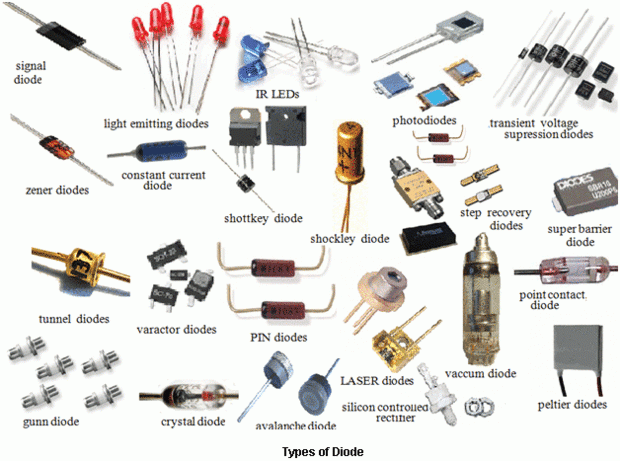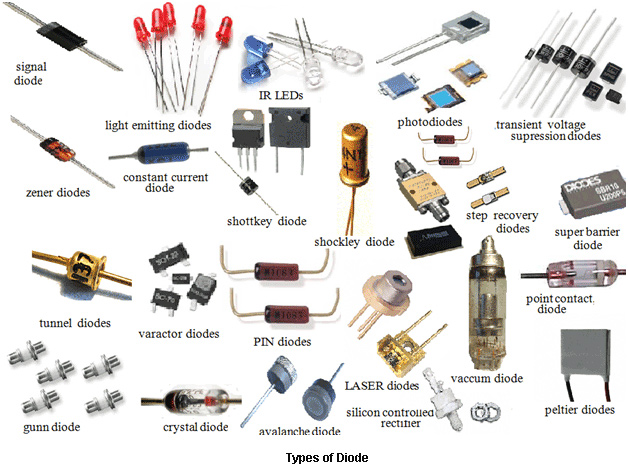Blog
The evolution of diodes

Diodes are also used for various purposes such as the production of different types of analog signals, microwave frequencies and even light of various colors. When current passes through Light Emitting Diodes or LEDs, it emits light of a specific wavelength. Such diodes are used for displays, room lighting and for decoration.

While most diodes today are made of silicone, historically, there were two types: thermionic, or vacuum tube, and solid state, or semiconductor. Both types were developed simultaneously, but separately, in the early 1900s. Early semiconductor diodes were not as advanced as their vacuum tube counterparts, which were extensively used as radio receiver detectors. Many types of these thermionic valves were in use and had different functions such as double-diode triodes, amplifiers, vacuum tube rectifiers and gas-filled rectifiers.
The diode name comes from the two electrodes it has. Both the thermionic as well as the semiconductor type possess the peculiar asymmetric property of conductance, whereby a diode offers low resistance to flow of current in one direction and high resistance in the other. Similar to its vacuum counterpart, several types of semiconductor diodes exist.
The first semiconductor diode was the cat’s whisker type, made of mineral crystals such as galena and developed around 1906. However, these were not very stable and did not find much use at the time. Different materials such as selenium and germanium are also used for making these devices.
In 1873, Frederick Guthrie discovered that current flow was possible only in one direction and that was the basic principle of the thermionic diodes. Guthrie found that it was possible to discharge a positively charged electroscope when a grounded piece of white-hot metal was brought close to it. This did not happen if the electroscope was negatively charged. This gave him proof that current can flow only in one direction.
Although Thomas Edison rediscovered the same principle in 1880 and took out a patent for his discovery, it did not find much use until 20 years later. In 1900s, John Ambrose Fleming used the Edison effect to make and patent the first thermionic diode, also called the Fleming valve. He used the device as a precision radio detector.
To put it simply, a diode functions as a one-way valve. It allows electricity to flow in one direction while blocking all current flow in the reverse direction. The semiconductor diode has an anode (A, p-type or positive) and a cathode (K, n-type or negative). Since the cathode is more negatively charged compared to the anode, electric current will not flow if the cathode and anode are charged to the same or very similar voltage.
This property of the diode allowing current to flow in only one direction is utilized during rectification, when alternating current is changed to direct current. Such rectifier diodes are mostly used in low current power supplies. For turning a circuit on or off, you need a switching diode. If you are working with high-frequency signals, band-switching diodes are useful. Where a constant voltage is necessary, there are zener diodes.
Diverse offers a complete range of diodes for every application, including zener, schottky, power, small signal, rectifiers and TVS. To request spec sheets, crosses or pricing, contact us at 1-800-381-7308 or email us at web@diverseelectronics.com.
thermionic, vacuum tube, solid state, semiconductor, Diode, evolution of Diodes, LED
Categories
- Aimtec
- Alternative Energy
- APEM
- Automotive AEC-Q200
- Brady Canada Labels & Printers
- BUD Industries
- Diodes
- Displays
- Diverse Electronics
- EMI/RFI Shielding
- ESD Diodes
- ESD-Static Control
- Industrial Vending Program
- Inspection Cameras
- Loctite Adhesives
- OC White Magnifiers
- Power Supplies
- SCS Static Control
- Stannol Solder
- SunLED LEDs
- Test Instruments
- Thermal Imaging
- Wago Connectors
- Winstar Displays
- Yageo

